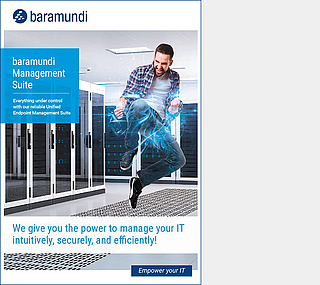5 Steps for practical and efficient IT asset management
CHECKLIST
BARAMUNDI CHECKLISTS provide concise, step-by-step expert advice for handling common IT challenges in a straightforward way. You can find more checklists here.
IT asset management solutions have grown in scope and importance for organizations of all sizes. From the CEO‘s laptop to the handheld warehouse scanner, each asset must be managed throughout its lifecycle for effective security and cost control. Practical and efficient IT asset management succeeds with these 5 important steps:
1. Save time – automated acquisition
For a comprehensive overview, automatic device capture is recommended. End devices connected to a central network can usually be identified via standard protocols. This is time-efficient and reduces errors. Only offline or shielded devices need to be captured manually.
2. Enrich data with inventory
To make sense of this captured raw data, it must be filterable by certain properties. Depending on the method, it may be necessary to manually enrich the individual data sets with information. This effort saves time in the long run and provides the basis for meaningful reporting.
3. Consider licenses
Automated inventory is also essential for software or firmware that requires a license. Only with an up-to-date database can licenses be correctly assigned and audits completed without stress. With application usage tracking, discrepancies in required licenses can be optimized.
4. Enhance Enterprise Mobility Management
Mobile devices can easily be stolen or fall into the wrong hands. They are also particularly susceptible to uncontrolled private use by users. Sound mobile device management and strict data separation or work profiles provide a remedy.
5. Foundation of risk management
When data on existing assets is captured and inventoried, it enables informed risk management. This makes it easy to identify particularly vulnerable endpoints and their dependencies. Network segmentation, isolation, or other measures can minimize security risk in operations.
In short: Effective IT asset management includes automated collection of device details, enriched inventory data, license management automation, MDM/EMM, and informed risk management. A comprehensive Unified Endpoint Management solution provides those capabilities and more.

